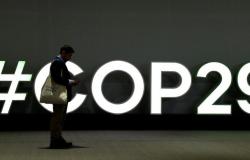Like all major projects, this one could never have seen the light of day anywhere other than in the crazy brains of three great agitators. We are then in 1984 and the trio formed by Pierre Lescure, Alain de Greef and Philippe Gildas is active. The first two have already been working for several months on the creation of an encrypted channel, designed to be at the forefront of television offeringsand the launch date is fast approaching. The third, then director of Europe 1, has just had one of those ideas that create excitement, and intends to take advantage of this new media to adapt the American Billboard in France. After all, if the British have their own version of this weekly sales ranking (Music Week), why not France?
To host the show, the three friends already have a name in mind: Marc Toesca, formerly with RMC and now employed by CANAL+. Only problem: the latter is not particularly excited about the position… “I was clearly resistant to this principle of hit paradehe remembers. Finally, Pierre Lescure presented the project to me as something quite punk. At the time, each radio station had its own chart, often created based on rather vague agreements with the different record companies. For the first time, a ranking made it possible to know who really sells records in France, and in what proportions!”.
A top show
Basically, how the Top 50 works is relatively simple: every week, the Nielsen and Ipsos institutes conduct their survey among a panel of record stores distributed throughout Franceand every Monday, the counters are reset to zero. Behind the scenes, no matter how much we try to avoid possible arrangements between industry professionals, no one can prevent the arrival of the first criticisms: “We were wrongly accused of rigging the results, when the rankings were solely based on sales in hypermarkets, small shops drawn at random and radio, FM and pirate programming.” To prove the good faith of his show, Marc Toesca cites as an example Soldat Louis, who appeared one day in 1988 as leader of the Top 50 when no one knew the group in the upper echelons of Paris. “The success of this group was quite simply on local radios, in Brittany and in the West of France, where “Du rhum, des femmes” was played on repeat.”
Since the first broadcast, broadcast on November 4, 1984, the day of the official launch of CANAL+, the editorial staff has never had control over the programming anyway. Basically, these rock kids dreamed of a program where they could satisfy their passion for alternative music, certainly not to applaud the success of Desireless or “Need nothing, want you” by Peter and Sloane, the first hit to stay at number one for nine consecutive weeks. But here's the thing: the Top 50 is not a promotional show, even less a program supposed to reflect the tastes of Marc Toesca and his friends.
The end of an era
To be in tune with this new generation of artists, CANAL+, however, sets itself two objectives: to give priority to songs that enter the ranking and to broadcast at least twelve new releases per week. For the rest, the team, mainly from the world of radio, adapts the same recipes to the screen – from the rhythm to the little jingles, including Marc Toesca's cult catchphrase: “Hello little nails” -, and bet on resourcefulness: “At the time, there were very few clips, so we collected rushes from other shows to fill oursreturns the animator. The Top 50 has undergone so much of the various developments in the industry, from 45s to albums, from cassettes to CDs, that it had to adapt no matter what.”
Over time, Marc Toesca has seen the formats add up, the pace of releases intensify, the access points to music multiply and, inevitably, weariness finally rears its ugly head: “I couldn’t see myself growing old with this show. In 1991, it was time to move on.” Since then, the rankings have lost meaning, replaced by statistics from streaming platforms, no one remains eleven weeks at the top of the Top 50 like Los Lobos in 1987 with “La Bamba” but one thing nevertheless seems immutable: in 1984 as in 2024, French youth have never really stopped singing “Travel, journey” or “The Midnight Demons” at every student evening.






